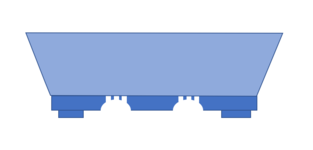Out in the Pacific NW lots of folks have been drilling holes in their pots for extra drainage. Also seeing pots “chocked” up during atmospheric river events and through most of spring is pretty much a normal thing to do out here
In the past year and a half I 3 contacted potters and asked then to start putting more holes in their pots, 5/16-1/4 in the four “corners” and oversized holes for the normal drain holes. None have said no, and all three started doing pretty much what I’d asked. A couple potters I know, Vicki Chamberlain and
@sorce , have done this or more for years. So it doesn’t seem to be an issue with the ceramics side, more a deal with “Tradition”
Cheers
DSD sends







